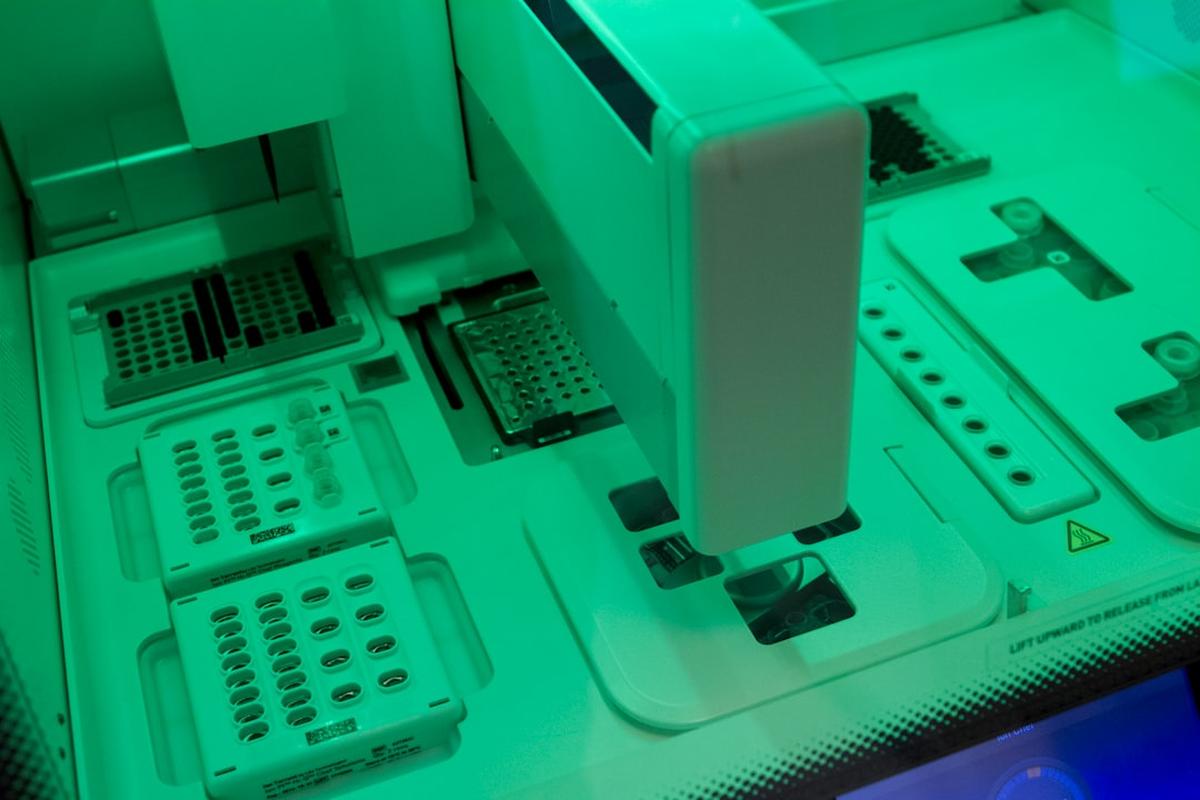In the grand narrative of human history, few things have been as influential and devastating as infectious diseases. From the Black Death to the Spanish Flu, these microscopic invaders have shaped our societies, cultures, and even our genetic makeup. But where did these diseases come from? How did they evolve and spread? To answer these questions, scientists are turning to an unexpected source: ancient DNA. This precious biological material, preserved in the bones and teeth of our ancestors, is providing us with unprecedented insights into the origins and history of infectious diseases.
Understanding Ancient DNA
What is Ancient DNA?
Ancient DNA refers to genetic material extracted from archaeological and paleontological specimens. It provides a direct link to our past, allowing us to trace the genetic history of humans and other organisms. This DNA is often degraded and contaminated, making it challenging to study. However, advances in extraction techniques and sequencing technologies have made it possible to recover and analyze ancient DNA, opening up new avenues of research in evolutionary biology, anthropology, and disease ecology.
Extracting and Studying Ancient DNA
The extraction of ancient DNA involves carefully removing a small sample from a specimen, such as a bone or tooth, and then using chemical treatments to isolate the DNA. This DNA is then sequenced using high-throughput sequencing technologies, which can generate millions of DNA sequences at once. The resulting data is analyzed using bioinformatics tools to reconstruct the genome of the organism and identify any genetic variants that may be associated with disease.
The Role of Ancient DNA in Tracing Human Evolution and Disease History
Ancient DNA has revolutionized our understanding of human evolution and disease history. By comparing the genomes of ancient and modern humans, scientists have been able to trace our evolutionary history, identify our extinct hominin relatives, and uncover the genetic changes that have occurred over time. Ancient DNA has also provided insights into the origins and evolution of infectious diseases, revealing how these diseases have co-evolved with humans and adapted to our changing lifestyles and environments.
Ancient DNA and the Origins of Infectious Diseases
Studying ancient DNA can shed light on the origins of infectious diseases, their evolution over time, and their impact on human populations. For instance, by analyzing the DNA of ancient pathogens, scientists have been able to trace the origins of diseases like leprosy, malaria, and tuberculosis, providing valuable insights into their evolutionary history and epidemiology.
Leprosy: A Case Study
Leprosy, a chronic infectious disease caused by the bacterium Mycobacterium leprae, has afflicted humans for thousands of years. By studying ancient DNA from skeletal remains, scientists have traced the origins of leprosy to the Late Bronze Age, around 4000 years ago. They have also found evidence of leprosy in medieval Europe, suggesting that the disease was widespread during this period. This research has not only revealed the ancient origins of leprosy but also its evolution over time, showing how the bacterium has adapted to different human populations and environments.
Malaria: A Case Study
Malaria, a deadly disease caused by Plasmodium parasites, has been a major public health problem throughout human history. Ancient DNA studies have revealed that malaria has been infecting humans for at least 7000 years, with evidence of the disease found in ancient Egyptian mummies. These studies have also shown that the spread of malaria was likely facilitated by human migration and changes in land use, highlighting the complex interplay between human activities and disease dynamics.
Tuberculosis: A Case Study
Tuberculosis, caused by the bacterium Mycobacterium tuberculosis, is one of the oldest known human diseases. Ancient DNA studies have traced the origins of tuberculosis to Africa around 70,000 years ago, coinciding with the migration of modern humans out of Africa. These studies have also revealed that tuberculosis has evolved over time, with different strains of the bacterium adapting to different human populations.
The Impact of Ancient DNA Studies on Modern Medicine
Understanding the history of diseases can inform current medical practices and contribute to future medical breakthroughs. For instance, by studying the evolution of pathogens, scientists can identify genetic changes that have allowed these organisms to evade our immune system or develop resistance to drugs. This knowledge can inform the development of new treatments and vaccines. Moreover, by tracing the spread of diseases in the past, scientists can predict how they might spread in the future, aiding in the design of effective public health strategies.
Challenges and Limitations in Studying Ancient DNA
Despite its potential, the study of ancient DNA is not without challenges. Extracting and analyzing ancient DNA is technically difficult, requiring specialized equipment and expertise. The DNA is often degraded and contaminated with modern DNA, making it hard to obtain reliable results. Moreover, there are ethical considerations in the study of ancient DNA, such as the need to respect the cultural and religious beliefs of indigenous communities whose ancestors’ remains may be studied.
The Future of Ancient DNA Research
With the advent of new technologies and methodologies, the field of ancient DNA research is poised for exciting discoveries. High-throughput sequencing technologies are becoming more powerful and affordable, making it possible to sequence ancient genomes in greater detail and at a larger scale. Bioinformatics tools are also improving, enabling more accurate and comprehensive analyses of ancient DNA data. These advances, coupled with interdisciplinary collaborations between archaeologists, geneticists, and disease ecologists, promise to deepen our understanding of human history and disease.
Conclusion
The study of ancient DNA is transforming our understanding of the origins and history of infectious diseases. By peering into the past, we are gaining valuable insights into the evolution of pathogens, the spread of diseases, and their impact on human populations. This knowledge not only enriches our understanding of human history but also informs our response to infectious diseases today. As we continue to unlock the secrets of ancient DNA, we can look forward to a future of exciting discoveries and medical breakthroughs.
Frequently Asked Questions
What is ancient DNA?
Ancient DNA refers to genetic material extracted from archaeological and paleontological specimens. It provides a direct link to our past, allowing us to trace the genetic history of humans and other organisms.
How is ancient DNA extracted and studied?
The extraction of ancient DNA involves carefully removing a small sample from a specimen, such as a bone or tooth, and then using chemical treatments to isolate the DNA. This DNA is then sequenced using high-throughput sequencing technologies, and the resulting data is analyzed using bioinformatics tools.
How does ancient DNA help us understand the origins and history of infectious diseases?
By analyzing the DNA of ancient pathogens, scientists can trace the origins of diseases, understand their evolution over time, and see how they have co-evolved with humans and adapted to our changing lifestyles and environments.
What are some diseases that have been traced through ancient DNA?
Scientists have traced the origins of diseases like leprosy, malaria, and tuberculosis through ancient DNA, providing valuable insights into their evolutionary history and epidemiology.
What are the challenges in studying ancient DNA?
Extracting and analyzing ancient DNA is technically difficult, requiring specialized equipment and expertise. The DNA is often degraded and contaminated with modern DNA, making it hard to obtain reliable results. There are also ethical considerations in the study of ancient DNA.
What is the future of ancient DNA research?
With the advent of new technologies and methodologies, the field of ancient DNA research is poised for exciting discoveries. These advances promise to deepen our understanding of human history and disease.
References
- Bos, K. I., Harkins, K. M., Herbig, A., Coscolla, M., Weber, N., Comas, I., … & Krause, J. (2014). Pre-Columbian mycobacterial genomes reveal seals as a source of New World human tuberculosis. Nature, 514(7523), 494-497.
- Krause-Kyora, B., Susat, J., Key, F. M., Kühnert, D., Bosse, E., Immel, A., … & Nebel, A. (2018). Neolithic and medieval virus genomes reveal complex evolution of hepatitis B. Elife, 7, e36666.
- Marciniak, S., Prowse, T. L., Herring, D. A., Klunk, J., Kuch, M., Duggan, A. T., … & Poinar, H. N. (2016). Plasmodium falciparum malaria in 1st–2nd century CE southern Italy. Current Biology, 26(23), R1220-R1222.
- Schuenemann, V. J., Singh, P., Mendum, T. A., Krause-Kyora, B., Jäger, G., Bos, K. I., … & Krause, J. (2013). Genome-wide comparison of medieval and modern Mycobacterium leprae. Science, 341(6142), 179-183.






